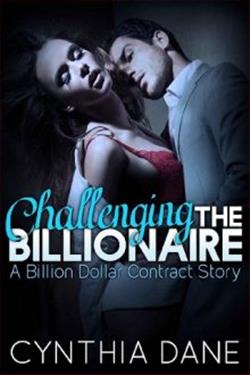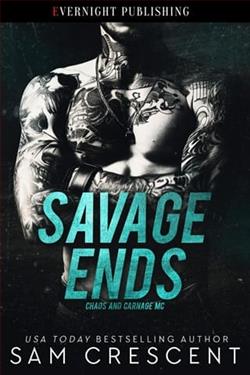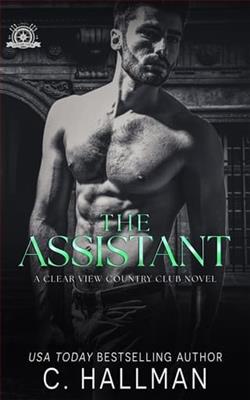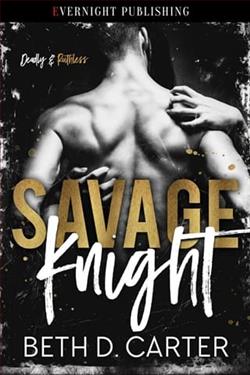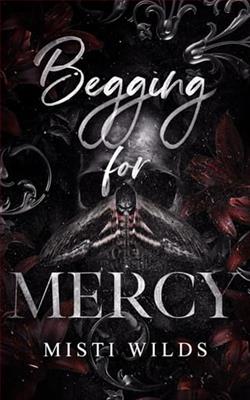Page 8 of Stealing Kisses
Not thirty seconds later, she returned with a laptop computer.
She set it in front of him and pointed to the screen.
“These are your lodging options. Start calling them after you talk to Jax,” she ordered. Then she walked to the back door, slid on a highlighter orange beanie, and put on a heavy plaid flannel jacket.
“Where are you going?” he called just as she closed the door on her way out.
She ignored him.
Teddy was on the phone when she walked back through the kitchen thirty minutes later, replaced her winter gear, and disappeared down the hallway without a second glance in his direction.
Another twenty-five minutes later, feeling much worse about his hotel options but much better about his car, Teddy slid his chair back under the table, switched off the kitchen lights, and wandered down the hall in search of Baylin.
Before he found her, Teddy discovered an old-fashioned parlor that encompassed the double-door entryway and stretched the width of the house, which he guessed was built in in the very early 1900s. His slight obsession with historical architecture and house design forced his feet into the room.
He envisioned the space as it likely had been a century before: an elegant center of the home, perfect for entertaining, with formal furniture, grand artwork and sculptures, patterned wallpaper, and tons of natural light streaming through the oversized picture windows. Teddy imagined men sitting in tall-backed chairs while smoking and discussing business…solving the problems of the world. He pictured women in full skirts and upswept hair, chatting about families in their community andactuallysolving the problems oftheirworld. The room carried an air of timeless stability.
He brushed off the creative history he’d conjured and studied the room for real.
Over the years, updates had transformed the parlor into a less formal room, one spacious enough to serve multiple purposes. Half the space felt solid and masculine, stately but not stuffy. Ornate carvings decorated rich wooden end tables and matched a heavy coffee table. Upholstered wingback chairs, aleather sofa, and an antique upright piano added layers of colors and textures. The layout resembled a private library.
Indeed, itwasa private library. Floor-to-ceiling built-in bookshelves dominated the entire side wall on that end of the room. Handsome, four-sided bookcases dotted the open space. Books, artwork, knick-knacks, and portraits in all ages and fashions of frames filled every shelf to the gills.
Outside of school and city libraries, Teddy had never seen such a wonderful collection of books. Some spines appeared older than dirt, but much richer with metallic lettering and embossed designs on the weathered leather covers. Others looked to be straight out of the late 1900s with glossy dust jackets printed in bold, vivid colors to show off bubbly, artistic fonts and dramatic scenes hinting at the stories tucked inside.
One large section of shelving contained a collection of books in individual cardboard slipcases. Their pristine condition belied their obvious age. Teddy picked up an edition ofAdventures of Huckleberry Finn,one of his all-time favorites, and eased the book from its case. With gentle caution, he opened the cover, but just a little so as not to pull on the spine. Inside lay a brochure, a single page folded in half to create four pages of detailed information. He read the contents cover to cover, learning about the typesetting and illustrator and binding used for that edition.
Teddy replaced the Mark Twain novel to exploreCandideby Voltaire. The same type of brochure, with the titleSandglassunder the wordsThe Heritage Club,rested inside the cover again. He found one in every book he glanced in. He admired a beautiful copy ofThrough the Looking-Glass,Lewis Carroll’s sequel toAlice in Wonderland.A lovely bouquet, stamped in white foil, filled the cornflower blue cover, equally simple and elegant. Then Teddy stumbled upon an exquisite copy ofThePickwick Papersby Charles Dickens. A rope pattern framed the lettersCD,all of which were embossed with deep red ink thatmatched the slipcase. A shiny gold foil circle displayed the title on the binding. Hands down, it was the most fabulous book Teddy had ever seen.
He held a strong affinity for Dickens; he related to Dickensian characters deep in his soul.
Without conscious thought, Teddy settled into an overstuffed reading chair positioned close to the bookshelves. He pulled the chain on a floor lamp over his left shoulder. As though he’d received a delicate treasure, Teddy studied the title page,The Posthumous Papers of the Pickwick Club. A wonderful drawing with the caption,Mr. Snodgrass The Poet,faced the title page. The vivid colors brought the character, in all his conflicted romantic melancholy, to life. The man’s personality oozed from the artwork.
Teddy turned the page to find the copyright information: a first edition printed in 1938, by The Heritage Press, Inc., illustrated by Gordon Ross.Magnificent.
With the greatest of care, Teddy laid open the Sandglass —Number XII: 26— and began reading about the birth of Samuel Pickwick.Fascinating.
“They won’t break,” Baylin announced from the doorframe, where she leaned against one shoulder, indicating she’d been there a minute.
Busted.
“They might,” Teddy argued. “They’re extraordinary.”
“That they are,” she agreed.She agreed…with something Teddy said.Miracles never cease.
“And my family has a fantastic collection of them,” Baylin explained.
“How many are there?”
“A man named George Macy published them as a monthly book club from 1935 to 1982, with a few bonus releases from time to time; they only ran about fifteen thousand copies perprinting, just enough for their subscribers. So, roughly fifty years…that’s about six hundred titles…times fifteen thousand copies?—”
“Nine million books,” Teddy finished for her. “In the publishing world, that’s not many.”
“Unless you’re an author trying to sell them, in which case nine million books is a decent number,” Baylin contested.
“Touché,” he allowed, enjoying their back-and-forth banter. She wanted to stay aloof, to shut him out. But, she wasn’t fooling Teddy. She liked him, at least a little.
“Why do you smile so much? Or grin? Or just…be happy?”








